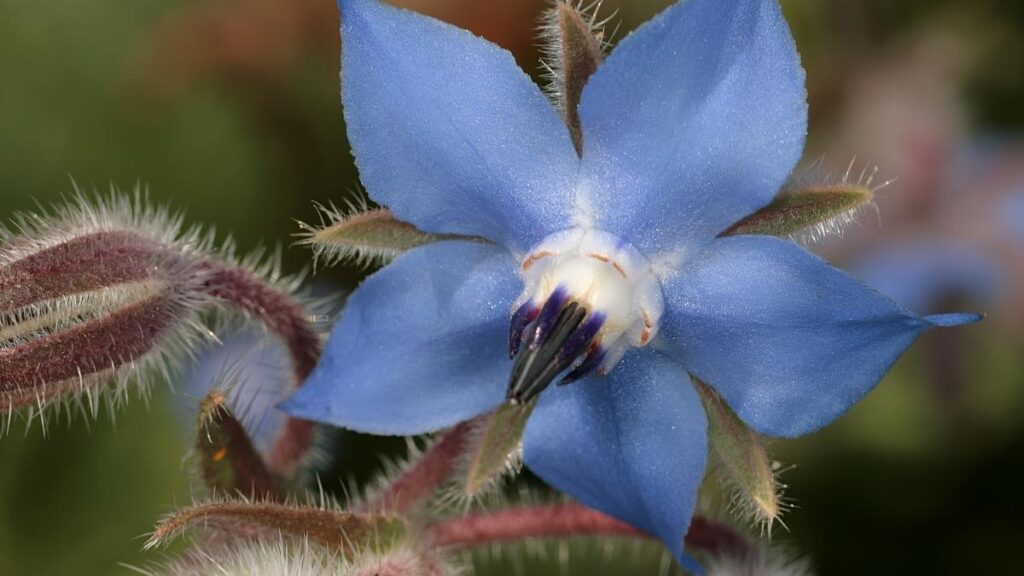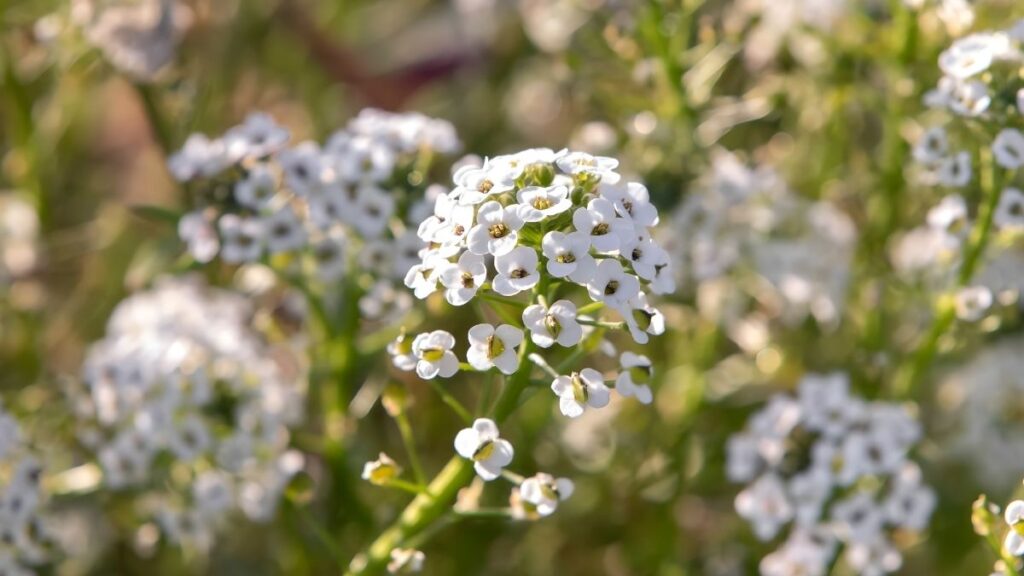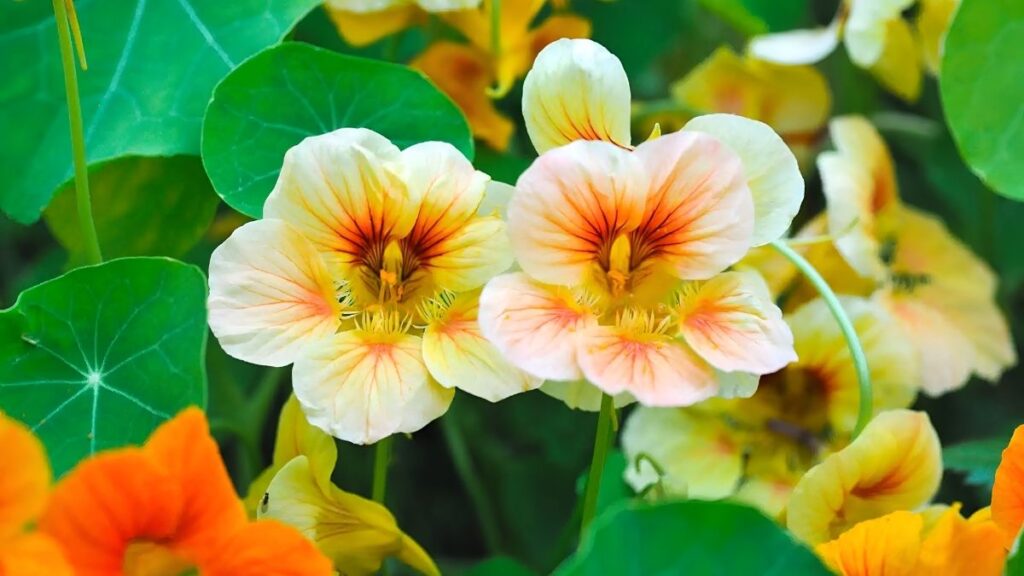A thriving garden doesn’t just add color and beauty it can also support local wildlife, especially pollinators like bees. However, attracting these vital creatures to your garden isn’t just about planting any flowers; you need to choose ones that offer both nutrition and shelter while providing vibrant blooms.
In this guide, we’ll explore six annual flowers that are perfect for attracting bees while boosting your garden’s overall health and aesthetics. These flowers are not only great for pollinators, but they also bring lasting color, resilience, and minimal care to your garden.
1. Sunflowers (Helianthus annuus)

Why They Attract Bees
Sunflowers are iconic in any garden, but they’re also incredibly attractive to bees. With their large, vibrant blooms, sunflowers provide a bounty of pollen and nectar, making them a go-to for pollinators during the summer months.
Care Tips:
- Sunlight: Full sun.
- Soil: Well-draining soil, though sunflowers are adaptable to many types.
- Watering: Regular watering, especially in dry conditions.
- Maintenance: Minimal just remove spent flowers to encourage fresh growth.
Bonus: Sunflowers can grow quite tall, providing a natural backdrop for your garden, and their seeds are a favorite treat for birds!
2. Cosmos (Cosmos bipinnatus)
Why They Attract Bees
Cosmos are not just a gardener’s favorite because of their delicate, daisy-like flowers—they’re also a bee magnet. Their open, easy-to-access blooms are rich in nectar, making them an ideal food source for pollinators throughout the growing season.
Care Tips:
- Sunlight: Full sun for the best blooms.
- Soil: Tolerates poor, well-draining soil.
- Watering: Water occasionally, but allow the soil to dry between waterings.
- Maintenance: Deadhead regularly to encourage more blooms.
Bonus: Cosmos are relatively pest-resistant, so they won’t require much maintenance once established.
3. Zinnias (Zinnia elegans)

Why They Attract Bees
Zinnias are vibrant, easy-to-grow flowers that can become the centerpieces of any garden, and their daisy-like structure makes them a favorite among bees. The flowers come in a range of colors, from fiery reds to cool purples, attracting bees with their abundant nectar.
Care Tips:
- Sunlight: Full sun.
- Soil: Well-draining, moderately fertile soil.
- Watering: Moderate be careful not to overwater.
- Maintenance: Regular deadheading to keep blooms coming.
Bonus: Zinnias bloom profusely, giving you lots of opportunities to attract pollinators throughout the growing season.
4. Borage (Borago officinalis)

Why They Attract Bees
Borage is often considered one of the best flowers for attracting bees due to its rich nectar content and the striking blue star-shaped blooms. The flowers are also edible, often used in salads or as garnishes, adding both beauty and functionality to your garden.
Care Tips:
- Sunlight: Full sun to partial shade.
- Soil: Prefers well-draining soil but tolerates a range of soil types.
- Watering: Water regularly, but ensure soil is well-draining to avoid root rot.
- Maintenance: Cut back spent flowers to encourage new blooms.
Bonus: Borage has a reputation for self-seeding, meaning it can continue to flourish in your garden year after year with minimal effort.
5. Sweet Alyssum (Lobularia maritima)

Why They Attract Bees
These tiny, fragrant flowers might be small, but they are a powerhouse for attracting bees and other pollinators. Sweet Alyssum forms a dense mat of flowers in shades of white, pink, and purple, creating an inviting haven for bees.
Care Tips:
- Sunlight: Prefers full sun but can tolerate partial shade.
- Soil: Well-draining, sandy soil is ideal.
- Watering: Water regularly, but make sure the soil doesn’t stay soggy.
- Maintenance: Regularly trim to promote fresh growth and prevent leggy plants.
Bonus: Sweet Alyssum thrives in containers or as groundcover, perfect for filling in gaps or decorating borders.
6. Nasturtiums (Tropaeolum majus)

Why They Attract Bees
Nasturtiums have vibrant, trumpet-shaped flowers in red, orange, and yellow that are irresistible to bees. They not only offer pollen and nectar but their leaves and flowers are also edible, adding a peppery flavor to salads or garnishes.
Care Tips:
- Sunlight: Full sun to partial shade.
- Soil: Prefers poor to moderately fertile soil.
- Watering: Water only when the soil is dry; they prefer less water once established.
- Maintenance: Minimal just remove spent flowers to encourage new growth.
Bonus: Nasturtiums are often used as companion plants in vegetable gardens because they help repel pests.
Tips for Creating a Bee-Friendly Garden
- Plant in Clusters: Bees are more likely to visit flowers that are planted in groups rather than scattered across your garden. Grouping flowers together will increase their attractiveness to pollinators.
- Choose Native Plants: Native flowers are often more appealing to local bee species, as they’ve evolved together over time.
- Provide a Variety of Blooms: Different flowers bloom at different times, so by choosing a range of flowers, you can provide a continuous source of nectar and pollen for bees.
- Avoid Pesticides: If you’re serious about attracting bees, avoid using pesticides that can harm them. Look for organic alternatives if you need pest control.
Conclusion: Supercharge Your Garden with Pollinator-Friendly Annuals
By incorporating these six bee-friendly annuals into your garden, you’re not only adding vibrant colors and textures to your outdoor space, but you’re also doing your part in supporting the environment. Whether you’re a seasoned gardener or just getting started, these flowers will help attract pollinators, improve biodiversity, and create a healthy, sustainable garden ecosystem.
So, plant a few Sunflowers, Cosmos, Zinnias, Borage, Sweet Alyssum, and Nasturtiums and watch your garden transform into a buzzing haven for bees and other beneficial pollinators.




